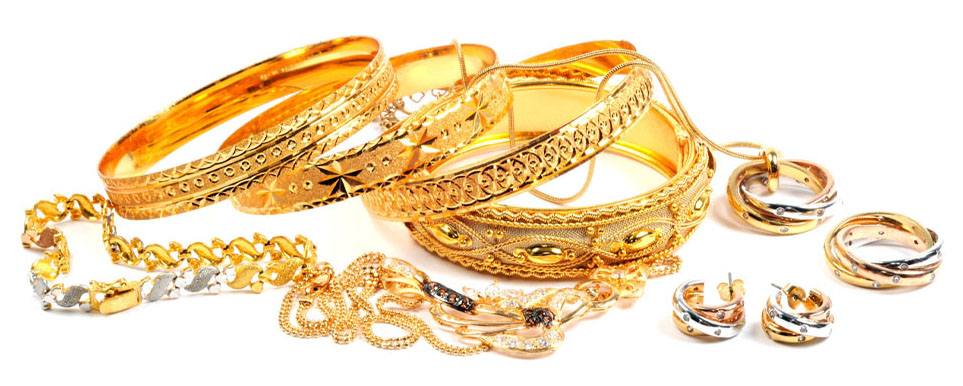Most people's introduction to gold probably comes from a television commercial for engagement rings or perhaps playing with their parent's jewelry as a young child. Conversely, you might think of Scrooge McDuck diving head first into his massive vault of gold coins. Wouldn't that be fun!
And while that visual is hilarious, the adventures of a miserly cartoon duck hardly connect us with the reality of gold bullion ownership.
It's no wonder certain segments of the general public are ambivalent about the yellow metal or think gold is merely some "decoration." Yes, gold jewelry comprises a large portion of annual demand, but it's not the only (or best) way to buy gold.
Gold is much more than just a fashion accessory. Its retail bullion form offers cost-effective exposure to a tangible, safe-haven asset with thousands of years of history to back it up.
Today we'll look at the differences between gold jewelry and investment grade retail gold bullion.
Brief Gold History
Our history with gold dates back to the Ancient Egyptians, who valued its beauty and used it for ornamental purposes. The yellow metal is deceivingly dense and feels great in hand, making it no surprise that civilizations gravitated towards gold's use. Gold's brilliant shine and corrosion resistance made it the popular choice for collecting and trading.
Gold naturally made an ideal medium of exchange, and by 600BC, the first gold coinage was minted by the Lydian Kingdom. Many empires issued their gold (and silver) coinage, and weights became standardized to assist international commerce. It's truly fascinating how so many diverse cultures throughout history cherished and valued gold in one form or another.
Gold (and silver) coinage formed the foundation for countless monetary systems throughout history because it kept the accounting honest. Issues such as currency debasement typically emerge during an empire's declining stages. Corrupt regimes would eventually collapse, and society restarted on a clean slate, back under a gold or gold and silver ("bimetallic") standard.
But as the saying goes, all good things must end, and any resemblance to sound money practices ceased after Former President Nixon closed the gold window and effectively ended the Gold Standard.
Unfortunately, the US Dollar, the Euro, and the rest of the world’s interconnected fiat currencies are no longer backed by gold bullion. Gold now operates independently of the current financial system and rightfully maintains its position as a long-term, physical hedge against inflation and a solid place to store your hard-earned savings.
So, what are my options for owning physical gold?

Gold Jewelry
Necklaces, bracelets, rings, earrings, 22 karat, 18 karat, 14 karat. Gold jewelry comes in all shapes, sizes, and even varying levels of purity. The most prevalent gold alloys are 14 and 18 karat, 75% and 58.3% gold by weight, respectively, with the remainder comprised of silver and copper. Here's a quick conversion chart for common gold alloys:
- 24 karat – 100% gold (24 parts gold)
- 22 karat – 91.6% gold (22 parts gold, 2 parts silver/base metal)
- 18 karat – 75% gold (18 parts gold, 6 parts silver/base metal)
- 14 karat – 58.3% gold (14 parts gold, 10 parts silver/base metal)
- 10 karat – 41.6% gold (10 parts gold, 14 parts silver/base metal)
In most cases, gold jewelry has much higher fabrication costs than standard bullion, and each piece sells for considerably more than the gold from which it's made. For instance, some designer jewelry has markups exceeding 100% of the gold melt value (excluding diamonds or other gemstones), as opposed to a gold coin or bar that trades hands for within a few percentage points of the gold spot price.
We also wanted to mention gold-plated jewelry. These pieces start with an appearance similar to the alloyed gold jewelry described above, but the plating wears off or tarnishes rather quickly. Plated gold jewelry is much cheaper but contains almost no real gold and has little to no resale value if you're ever looking to sell.
Gold Bullion
Retail gold coins and bars range in sizes from 1 gram to 400 oz (almost 28 pounds).
But most retail gold products are packaged in 1 troy ounce or fractional troy ounce varieties. Many carded Swiss gold bars are offered in a wide range of multi-gram sizes to allow for more options and greater flexibility.
As mentioned before, jewelry fabrication costs and other markups account for a sizable percentage of the price you pay for gold jewelry. In contrast, most gold bullion is minted or cast by a sovereign or private mint in state-of-the-art facilities that allow for more significant economies of scale. While the gold is still costly to acquire, the raw material is economically converted into its final form.
Retail gold bullion is also stamped with markings from the mint that specify weight and purity, making identification and reselling more straightforward. Jewelry is usually marked for purity, but the metal weight is omitted.
And for those who never compromise, we also carry beautiful 99.99% pure gold bullion bracelets that offer incredibly reasonable premiums over spot price.
Key Takeaways
Gold jewelry and retail gold bullion are as alike as they are different. Each serves a different market but carries intrinsic value and can be thought of as an investment or form of savings.
Gold is gold, and gaining any exposure to physical precious metals is better than nothing at all. But depending on your overall long-term goals, certain gold products, such as coins and bars, are more cost-effective and offer superior liquidity.
In addition, PIMBEX has created a two-way market, and we buy back every item we stock. Our low premiums and tight buy/sell spreads allow anyone to acquire gold and silver bullion.
Get started today!
